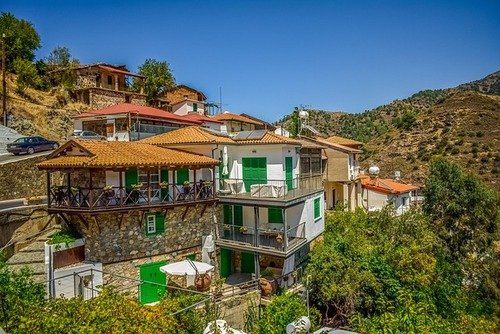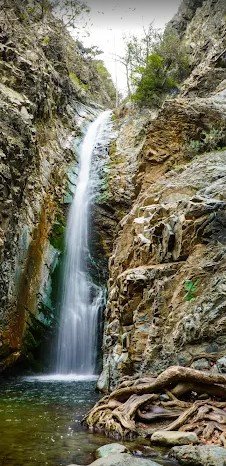Cyprus, famous for its beaches and ancient ruins, also hides a collection of charming hidden villages in its mountains and countryside. Consequently, these secret hamlets offer travelers a genuine taste of Cypriot life, blending old traditions, warm hospitality, and stunning scenery. Moreover, this guide highlights the most enchanting hidden villages of Cyprus, sharing insights and tips for an unforgettable adventure. Whether you’re a culture lover or seeking peace, these tucked-away gems reveal the island’s rich heritage.
Why Visit the Hidden Villages of Cyprus?
Unlike the busy coastal cities like Paphos or Limassol, the hidden villages of Cyprus provide a deep connection to the island’s heart. For instance, stone houses, cobblestone paths, and friendly locals offering homemade treats create a timeless feel. Additionally, these secluded hamlets, often nestled in the Troodos Mountains or rural plains, preserve Cyprus’s traditions, from Byzantine art to crafts like lace-making and winemaking. By exploring these hidden villages of Cyprus, you support local communities and eco-friendly tourism.
Must-Visit Secret Hamlets in Cyprus
Below, we showcase the top hidden villages of Cyprus, chosen for their cultural richness, natural beauty, and unique offerings based on traveler reviews and local knowledge.
1. Omodos: A Charming Hidden Village of Wine
Tucked in Cyprus’s wine region, Omodos is a delightful hidden village known for its winemaking. Firstly, stroll its narrow streets with stone houses and visit the 17th-century Timios Stavros Monastery. Next, taste wines at family-run wineries like Ktima Gerolemo. Additionally, the August wine festival draws visitors to this hidden village of Cyprus. Don’t miss the handmade lace or traditional kleftiko (slow-cooked lamb).
- Highlight: The Monastery’s relics and Socrates Traditional House museum.
- How to Get There: A 40-minute drive from Limassol; buses are limited.
- Tip: Stay in a restored guesthouse for an authentic hidden village experience.
2. Kakopetria: A Scenic Retreat in the Troodos Mountains
Nestled by the Karkotis River, Kakopetria is a hidden village of Cyprus blending nature and history. For example, its old quarter with stone houses is a protected heritage site. Moreover, the UNESCO-listed Agios Nikolaos tis Stegis church has 11th-century frescoes. Furthermore, this hidden village offers hiking trails and waterfalls in the Troodos range, ideal for nature enthusiasts.
- Highlight: Linos Inn for traditional Cypriot food and cozy stays.
- How to Get There: About 1 hour from Nicosia by car; limited bus services.
- Tip: Try local trout at a riverside taverna.
3. Lefkara: The Heart of Cypriot Craft
Famed for its lefkaritika lace and silverwork, Lefkara is a must-see hidden village of Cyprus for craft lovers. Specifically, this twin hamlet (Pano and Kato Lefkara) features charming streets and artisan workshops. Additionally, the 16th-century Church of the Holy Cross and Lefkara Folk Art Museum are highlights. According to legend, Leonardo da Vinci bought lace in this hidden village.
- Highlight: Authentic lefkaritika, a UNESCO-recognized craft.
- How to Get There: 30 minutes from Larnaca by car; taxis recommended.
- Tip: Visit during the September Lefkara Festival for cultural shows.
4. Fikardou: A Timeless Rural Hamlet
A tiny, near-deserted hidden village of Cyprus, Fikardou is a living museum of rural life. For instance, its 18th-century wooden houses, restored as a heritage site, won a Europa Nostra Award. Moreover, the House of Katsinioros museum offers a glimpse into past lifestyles. Consequently, its quiet mountain setting suits travelers seeking solitude in a hidden village.
- Highlight: The rural museum with traditional tools.
- How to Get There: 40 minutes from Nicosia; car needed.
- Tip: Pair with a visit to Machairas Monastery.
5. Tochni: A Rustic Hidden Village for Agrotourism
Straddling a hillside between Larnaca and Limassol, Tochni is a peaceful hidden village of Cyprus perfect for agrotourism. Specifically, stay in stone cottages, cycle through olive groves, or learn to cook Cypriot dishes like souvlaki. Furthermore, the small Agios Konstantinos church adds rustic charm to this hidden hamlet.
- Highlight: Agrotourism activities like donkey rides or olive oil tastings.
- How to Get There: 30 minutes from Larnaca or Limassol by car.
- Tip: Book a guesthouse for farm-to-table meals.
6. Kalopanayiotis: A Tranquil Hidden Village with Springs
Known for thermal springs, Kalopanayiotis is a serene hidden village of Cyprus in the Troodos Mountains. For example, the UNESCO-listed Agios Ioannis Lampadistis Monastery has stunning frescoes. Additionally, spa facilities and hiking trails make this hidden hamlet a wellness retreat.
- Highlight: The Venetian Bridge and sulphur springs.
- How to Get There: 1.5 hours from Nicosia; car recommended.
- Tip: Try local rosewater products.
7. Vouni: A Quiet Wine Hamlet
A lesser-known hidden village of Cyprus, Vouni offers stunning views and authentic charm. Specifically, visit its wine museum, taste Commandaria wine, and explore vineyards. Moreover, its stone architecture and cozy tavernas make this hidden hamlet a true gem.
- Highlight: Vouni Panayia Winery for tastings.
- How to Get There: 40 minutes from Limassol; car needed.
- Tip: Visit in autumn for the grape harvest.
Tips for Exploring the Hidden Villages of Cyprus
- Best Time to Visit: Spring (April-May) brings wildflowers, while autumn (September-October) offers mild weather. Additionally, winters are cozy, but summers can be hot in these hidden villages.
- Getting Around: Rent a car, as public transport to these secluded hamlets is scarce. Moreover, mountain roads are narrow but well-kept.
- Accommodation: Choose agrotourism stays or guesthouses; however, book early during peak seasons.
- What to Bring: Pack comfy shoes, a water bottle, and a camera. Also, bring layers for cool mountain evenings.
- Cultural Etiquette: Greet locals with “Kalimera,” dress modestly at religious sites, and ask before photographing people.
- Local Cuisine: Enjoy souzoukko, afelia, and halloumi. Furthermore, many hidden villages offer cooking classes.
- Connectivity: Wi-Fi is common in guesthouses, but signals can be weak—thus, download offline maps.
The Lasting Appeal of Cyprus’s Secret Hamlets
The hidden villages of Cyprus are more than scenic escapes; indeed, they preserve the island’s cultural core. By visiting these tucked-away hamlets, you support artisans, farmers, and small businesses, boosting sustainable tourism. Moreover, these hidden villages offer a slow pace to connect with Cyprus’s traditions, from Orthodox Christianity to crafts. For a full adventure, pair your visits with hikes, wineries, or nearby ruins.
Embark on a journey to these hidden villages of Cyprus, and consequently, uncover an authentic world where history, hospitality, and nature create lasting memories.



